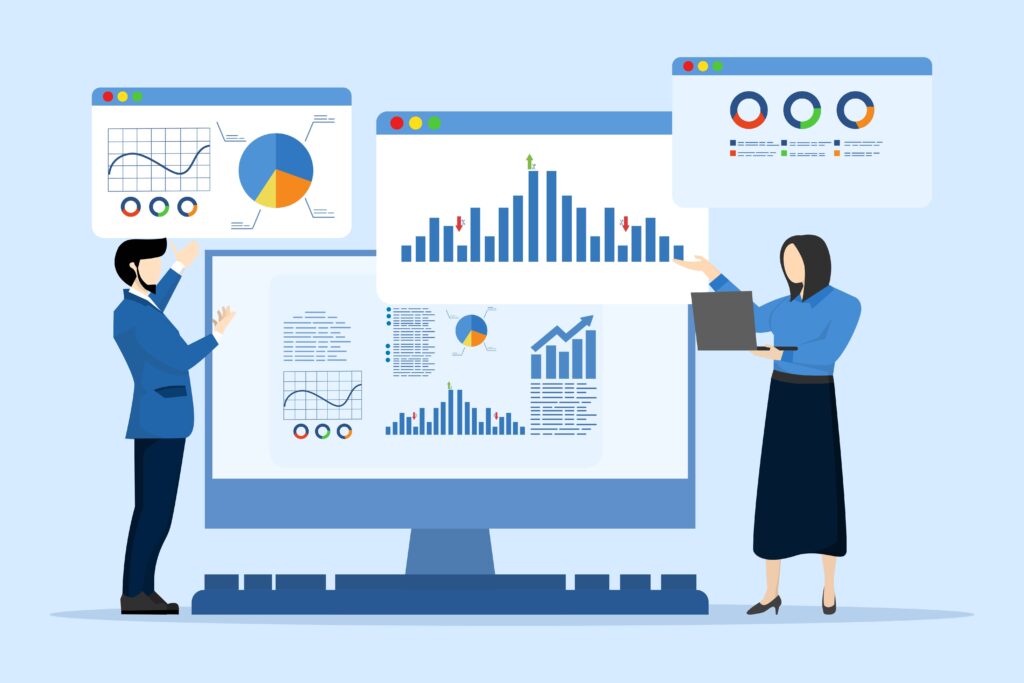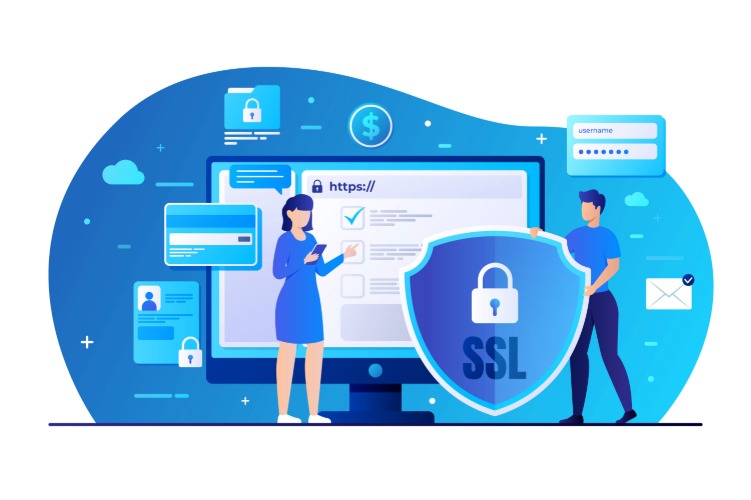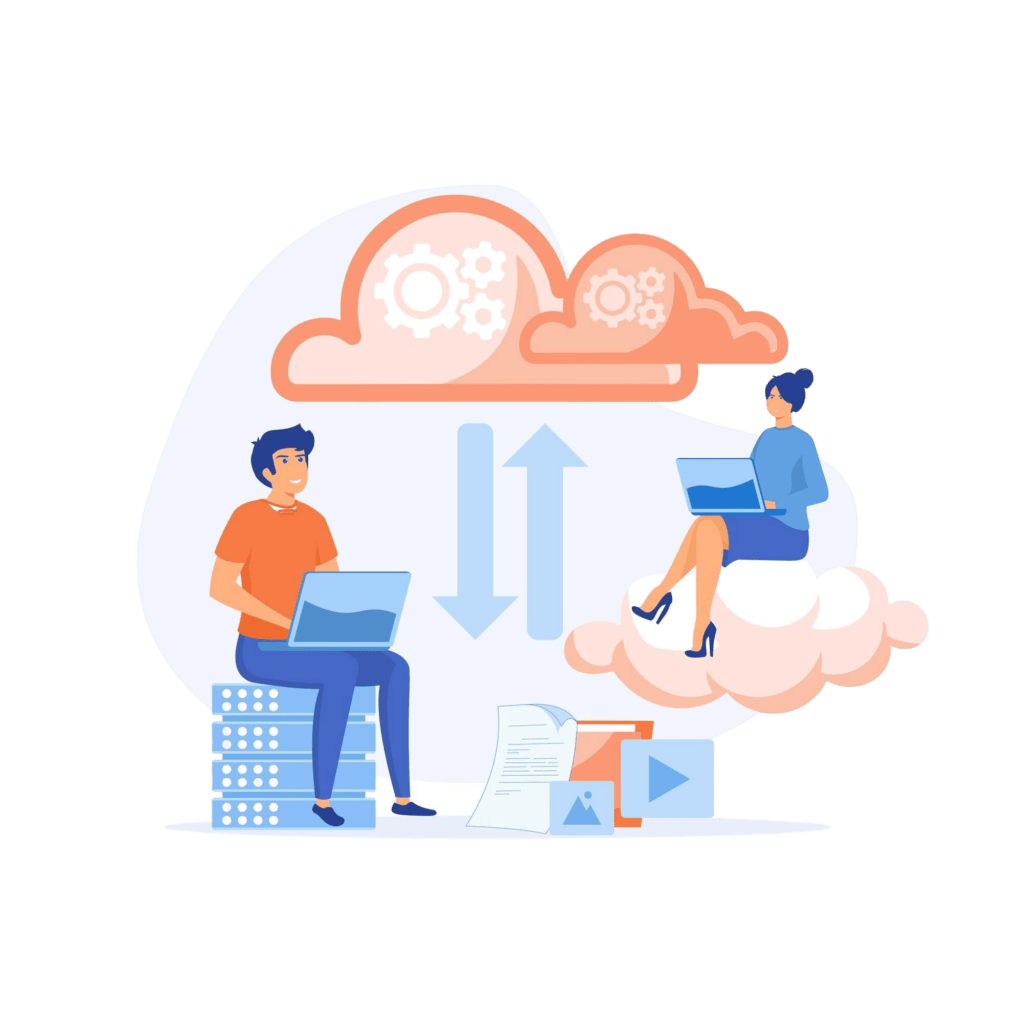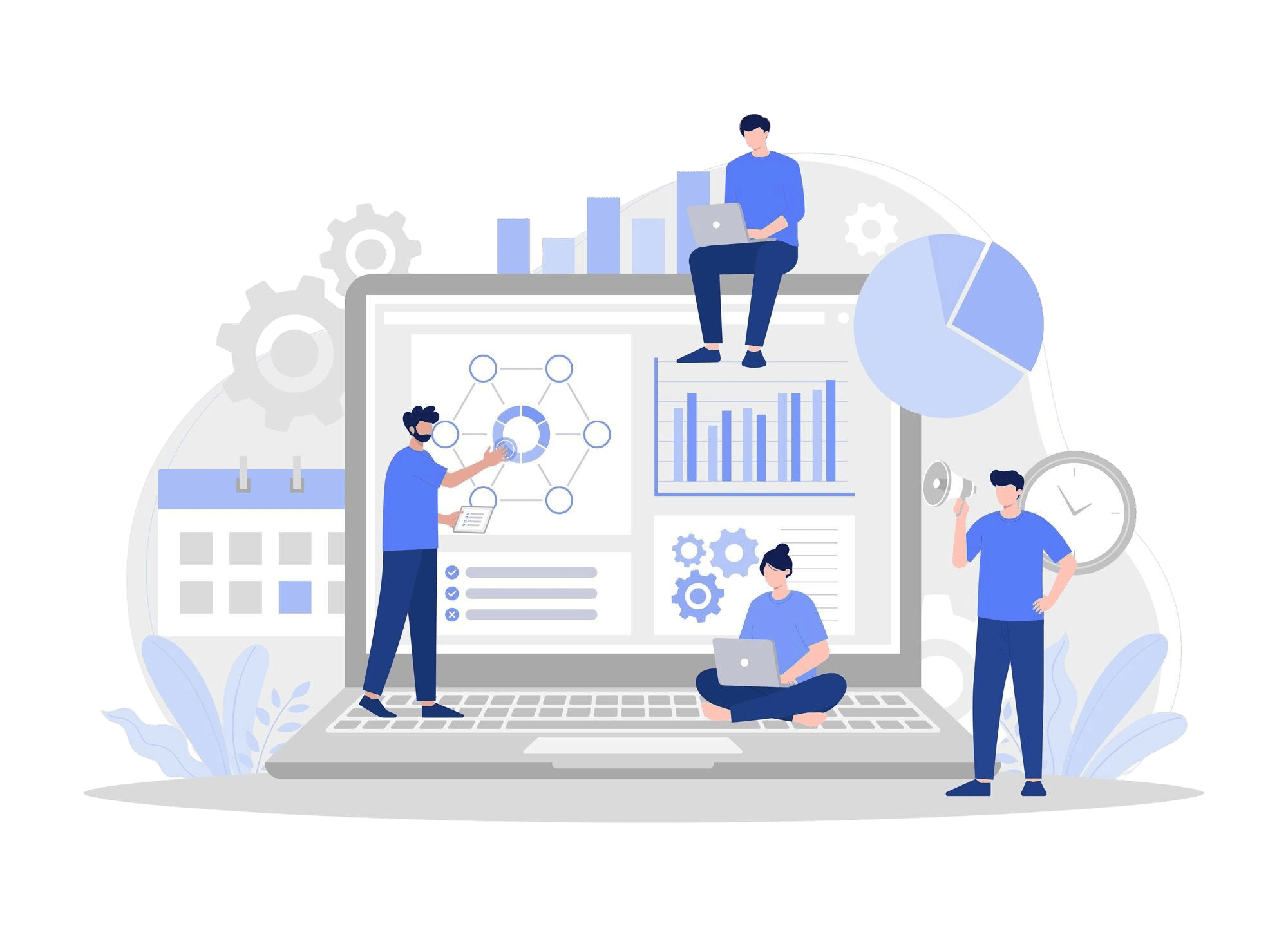Has your organization outgrown its current systems? Are isolated systems leading to data errors and slowing down your business operations?
With growing business demands and evolving technology trends like AI integration, maintaining an efficient and future-ready application can be challenging. To stay competitive and build software tailored to your organization’s needs, you need enterprise-level solutions that scale along with your business.
But, how can you ensure your enterprise app aligns with both current standards and keep up with the digital demands in 2025? If this sounds like the mindset you’re in right now, you’re not alone.
At Mallow Technologies, we bring over 14 years of experience in enterprise software development, helping businesses like yours navigate these complex requirements. Our team specializes in transforming your business objectives into high-performing enterprise applications, giving you the confidence that your investment is built to last while staying aligned with the latest trends and future growth.
By the end of this article, you’ll have a clear understanding of enterprise software development – what it is, how it differs from other software types, its impact across industries, and the key steps involved in enterprise software development. We’ll also explore the top enterprise software trends for 2025, providing insights into how these advancements can drive efficiency and growth in your business.
What is enterprise software development?
Enterprise software development is the process of creating large-scale, complex applications designed for organizational use. These applications help automate daily tasks, streamline operations, and seamlessly integrate with existing systems.
By implementing enterprise software, businesses can improve efficiency and productivity by automating complex processes, enhancing collaboration and communication between teams, and maximizing ROI. Enterprise software development services cover a wide range of functions, including Customer Relationship Management (CRM), Business Intelligence (BI), online payment processing, accounting, operations, and order management.
According to Statista, the global enterprise software market generated $212.58 billion in revenue in 2020 and is projected to reach $315 billion by 2025. With an estimated annual growth rate of 6.18% from 2025 to 2029, the market is expected to reach $400.40 billion by 2029.
Why should businesses invest in enterprise software development?

Data driven decision making
With corporate software development for your business, you can collect, store, and analyze large volumes of data. It gathers data from various sources, such as customer interactions, transactions, and operational processes, and securely stores it in centralized databases or cloud platforms. Using robust analytics, it then provides real-time insights that help you make data-driven decisions, predict market trends, and improve your overall business strategy.
For example, A CRM system like Salesforce helps sales teams analyze customer behavior, track interactions, and personalize marketing strategies to improve customer engagement and retention.
Scalability and adaptability
As businesses grow, enterprise software is designed to scale along with the organization, in order to handle large data volumes and user loads without performance issues. Built with a modular design and cloud-based architecture, it allows upgrades and easy integration of new features as needed. This enables businesses to adapt quickly to evolving market demands and technological advancements.
Improved organisational performance and efficiency
According to Panorama Consulting’s ERP report, 85.5% of enterprises invest in software to improve productivity and efficiency. By automating the repetitive tasks, Enterprise software reduces manual effort, improving the overall efficiency and performance. These solutions ensure smoother workflows, optimize resource allocation, eliminate bottlenecks, and target unique needs.
Enhanced security

Ensuring strong security is crucial for any enterprise application. Custom enterprise software development is designed with advanced security measures tailored to an enterprise’s needs, reducing the risk of security breaches and vulnerabilities. These measures align with security-by-design principles outlined by NIST, which emphasize integrating security throughout the software development lifecycle.
A well-developed enterprise software safeguards sensitive data, access control, and system integrity against interruptions. It is also designed to meet industry-specific regulatory and compliance requirements, ensuring that the enterprise adheres to necessary standards.
For example, a global healthcare organization might develop custom enterprise software that integrates end-to-end encryption, multi-factor authentication, and role-based access controls, ensuring the security and compliance of sensitive patient data.
Long-term cost savings
Custom enterprise software is not just about addressing an organization’s unique needs.it’s an investment that pays off in the long run. Its automation functionalities reduce manual labour costs, eliminating the need for multiple separate systems, reducing dependency on external vendors and minimizing maintenance costs.
For example, a logistics provider might implement a tailor-made fleet management system that integrates route planning, real-time tracking, and maintenance scheduling, significantly reducing operational expenses and eliminating reliance on costly third-party solutions for long-term savings.
To help businesses gain a clearer picture of real-world pricing expectations, you can explore the custom software development cost survey by GoodFirms, a detailed industry-backed report that breaks down how startups and SMEs plan their budgets, what factors influence software development costs, and the emerging pricing trends shaping 2026.
How is normal software different from enterprise software?
Scalability and complexity of projects
For enterprise software, scalability is a key consideration. It is designed to handle large-scale operations, ensuring high performance while managing massive amounts of data, transactions, and diverse business processes across multiple locations.
Normal software is built for individual users or small businesses with limited functionalities, often lacking the ability to scale with limited data storage and user bases.
Architecture
Enterprise software is built in a complex and scalable architecture to handle large user volumes and data loads. It uses custom-built components and complex integrations with existing enterprise systems.
Normal software is built with a simpler architecture focused on efficiency and ease of development. To speed up the development process, it uses the existing frameworks and libraries.
Target audience and user base
Enterprise software is customized to meet an organization’s specific needs. It provides users with varying roles, access levels, and security permissions within the organization.
Regular software targets individual users or small businesses without the need for complex role-based access control.
Regulatory and compliance considerations
Enterprise software must follow industry-specific regulations with advanced encryption, role based access control, and compliance with data protection standards such as GDPR, HIPAA, and ISO.
Normal software has simpler compliance requirements, which vary based on the app’s purpose and data practices. It often lacks enterprise-level security features and strict regulatory compliance measures.
Integration with existing systems and customisation
Enterprise software is designed to integrate with the existing systems and infrastructure in the organization. It integrates with multiple existing systems, such as databases, cloud platforms, and third-party APIs. These apps are designed to accommodate the unique requirements of each organization offering customization and scalability.
Normal software is designed with little customisation and also as standalone applications with minimal or no integration options.
Lifecycle management and maintenance
Ongoing maintenance and updates are crucial for enterprise software. They ensure smooth operations and compliance with changing industry standards. Many organizations have dedicated IT teams to manage updates and address any issues.
Normal software developers release updates and feature enhancements based on user feedback. Maintenance includes bug fixes and performance improvements.
What are the steps and processes involved in enterprise software development?
Analyze the needs of the business and gather requirements
Business process analysis begins with documenting current business processes and evaluating existing software, its capabilities and limitations of the current IT environment.
Taking to account the business needs and concerns, a strategy is planned that aligns IT decisions with the goals of the organization.
Another important aspect is defining the software requirements and evaluating the possible risk associated with budget constraints, security vulnerabilities and the impact on business processes due to the introduction of the new system.
Planning and design of the enterprise application
Following comprehensive analysis, the next phase focuses on planning and designing the enterprise application. This stage involves transforming the gathered business requirements into detailed wireframes.
In addition to that, it includes defining technical requirements, choosing an architecture, and selecting the appropriate programming languages, frameworks, and databases to support the software.
Next, UI/UX design, outlining how users will interact with the system and crafting wireframes that capture the basic layout and functionality. The enterprise application is designed in a way to integrate various business applications, services, and databases into a single structure.
For data exchange between the integrated applications, deciding on the right communication protocols is essential.
Security for the enterprise application to ensure the protection of sensitive data, such as authentication and authorization protocols is also designed in this phase.
Development and testing and ensure under regulatory compliance
The next stage involves the development and testing of the enterprise application.
Backend development involves developing the server-side logic, developing APIs, and integrating databases to communicate with the frontend and other systems.
Frontend development focuses on designing intuitive user interfaces along with the user experience, creating responsive designs, managing client-side interactions, and establishing a connection with the server.
Testing is conducted to ensure that all functionalities, features, performance, and security requirements are met. After testing, any bugs and issues are fixed.
Enterprise software is also ensured with compliance measures to meet all applicable government and industry regulations, such as HIPAA, CGMP, GLBA, PCI DSS, and GDPR.
Data migration
The next stage is migrating data from the existing system to the enterprise software. First is analyzing the data for migration to avoid duplications or inconsistencies. Data mapping is performed to ensure that the proper data is placed in the corresponding fields in the new system
A data format is chosen for migration, and the data is converted into a format that is compatible with the new software. Data is extracted, transformed, and loaded into the new system,
After the data migration is complete, testing is conducted to ensure the accuracy and consistency of the data within the new system.
Deployment
Initially, the enterprise software is deployed in a testing environment, where the team identifies and addresses any issues. If problems persist, they are resolved before moving the software to production. Once all issues are fixed, the software is deployed to production and goes live.
What are the key trends evolving Enterprise software in 2025?
Artificial Intelligence (AI) and Machine Learning (ML) integration
AI and ML are transforming business operations by task automation, improving decision making through data analysis and more. By integrating both the AI and ML models into enterprise software, businesses can have intelligent chatbots for instant interactions, significantly reducing the need for human intervention and improving the user experience.
In recent days, open AI, a pioneer in AI research, has gained global recognition for its innovations and capabilities. With machine learning, the algorithms will continuously learn, adapt, and improvise over time based on the data and information received from the users. This integration further enhances smooth operations, repetitive tasks, and fuels innovation.
Key benefits of AI and ML integration in Enterprise include:
- With machine learning algorithms processing vast amounts of data in real-time, businesses can make faster, data-driven decisions that improve accuracy and strategic planning.
- Through AI-driven anomaly detection and ML-powered pattern recognition, enterprises can proactively identify security threats, minimizing risks and strengthening data protection measures.
- By automating repetitive tasks, AI and ML reduce manual effort and enhance operational efficiency, allowing teams to focus on high-value initiatives that drive business growth.
Low-Code/No-Code EAS development
Low-code/no-code development is becoming increasingly popular in software development, as it allows individuals to create applications with minimal technical knowledge. Gartner’s projections suggest that by 2025, almost two-thirds of app development projects will utilize low-code development.
The benefits of low-code/no-code EAS development include:
- It allows users to build customized applications with minimal coding knowledge.
- Low-code/no-code EAS development helps users or customers to design personalized functions and operations tailored on their specific requirements.
- Businesses can also cut costs by leveraging low-code or no-code enterprise application development.
Data analytics and business intelligence integration
More businesses are integrating enterprise business intelligence software like Power BI to make informed decisions. These tools automate manual tasks, ensure data consistency, and reduce resource consumption. As noted by McKinsey & Company, organizations that leverage data-driven strategies will significantly outperform competitors in operational efficiency and innovation.
By integrating business intelligence software, it allows businesses to stay ahead in today’s data-driven landscape. It enables you to respond quickly to market changes, identify emerging trends, and drive innovation, ensuring a competitive edge in an ever-evolving environment.
Progressive web applications
Progressive web apps are becoming a preferred choice for enterprise solutions due to their enhanced performance and offline capabilities. It enhances enterprise solutions by adapting to various screen sizes and devices. This ensures a user-friendly experience with faster loading times, whether accessed on smartphones or large tablets.
The business impact of PWAs includes:
- Even in areas with limited connectivity, PWAs continue to function effectively, offering reliable offline access and faster loading speeds.
- This adaptability proves especially beneficial in emerging markets with higher mobile data costs, expanding the reach and usability of web applications.
Robotic Process Automation (RPA)
It is one of the key trends in the world of enterprise applications. This transformative technology streamlines repetitive, rule based tasks in businesses by mimicking human interactions with software systems.
Features of Robotic Process Automation:
- By automating processes, RPA reduces human errors and saves overall time.
- RPA bots interact with user interfaces just like humans, navigating forms, enter data and executing a range of actions within applications, enhancing speed and precision.
- Since RPA bots integrate across various applications, databases and systems, they efficiently manage data from diverse sources enabling comprehensive process automation.
- RPA safeguards sensitive data and adheres to regulatory standards, maintaining organizational integrity.
Cloud-centric approach

Using cloud computing in your enterprise software, it offers the flexibility and scalability to store , manage and work on data stored on cloud servers. It helps the businesses to accommodate changing business needs.
Key benefits of cloud-based applications:
- Automated updates and security patches keep enterprise applications secure, up-to-date, and compliant with industry standards.
- By using a client-based approach, businesses can obtain greater mobility to carry on operations and work with the team from anywhere.
- Choosing cloud service models allows enterprises to scale resources up or down effortlessly based on their needs and market demands.
How do you partner with the right development team for your Enterprise application?
Now you have a clear understanding of what enterprise software development is, how it can transform your business and the key trends evolving in enterprise software development. With this knowledge, you can now make informed decisions that align with your business goals.
Though enterprise software development offers huge benefits, it also comes with challenges such as balancing cost and complexity, integrating third-party APIs and systems, and ensuring enhanced security. With the right strategies, these challenges can be effectively managed to ensure a smooth and successful development process.
The next step is choosing the right development team, a decision that directly impacts your time, investment, and overall business success. To simplify this process, we’ve written a step-by-step guide on how to choose the right development team. This article will provide you with the insights needed to make a confident and well-informed journey.
Still unsure how to proceed with enterprise software development? Our team is here to help. Feel free to reach out!
Author
Kamalavel Rajendran
Kamal is the CEO of Mallow Technologies, a visionary leader with a mission to harness the potential of technology for tackling a variety of business challenges. He established the company with the objective of delivering tailored software solutions that address the wide array of issues encountered by businesses. He firmly believes that technology, empowers businesses to make informed decisions and promotes growth from every angle. In his leisure time, Kamal exhibits a remarkable passion for the game of tennis, immersing himself fully in the game. Furthermore, beyond the confines of the tennis court, his unwavering enthusiasm for innovation is apparent as he stays at the forefront of the latest developments in the realms of both business and technology. His dedication to merging the worlds of business and technology positions him as a dynamic presence in the industry, continually seeking inventive solutions to propel companies towards new horizons.


